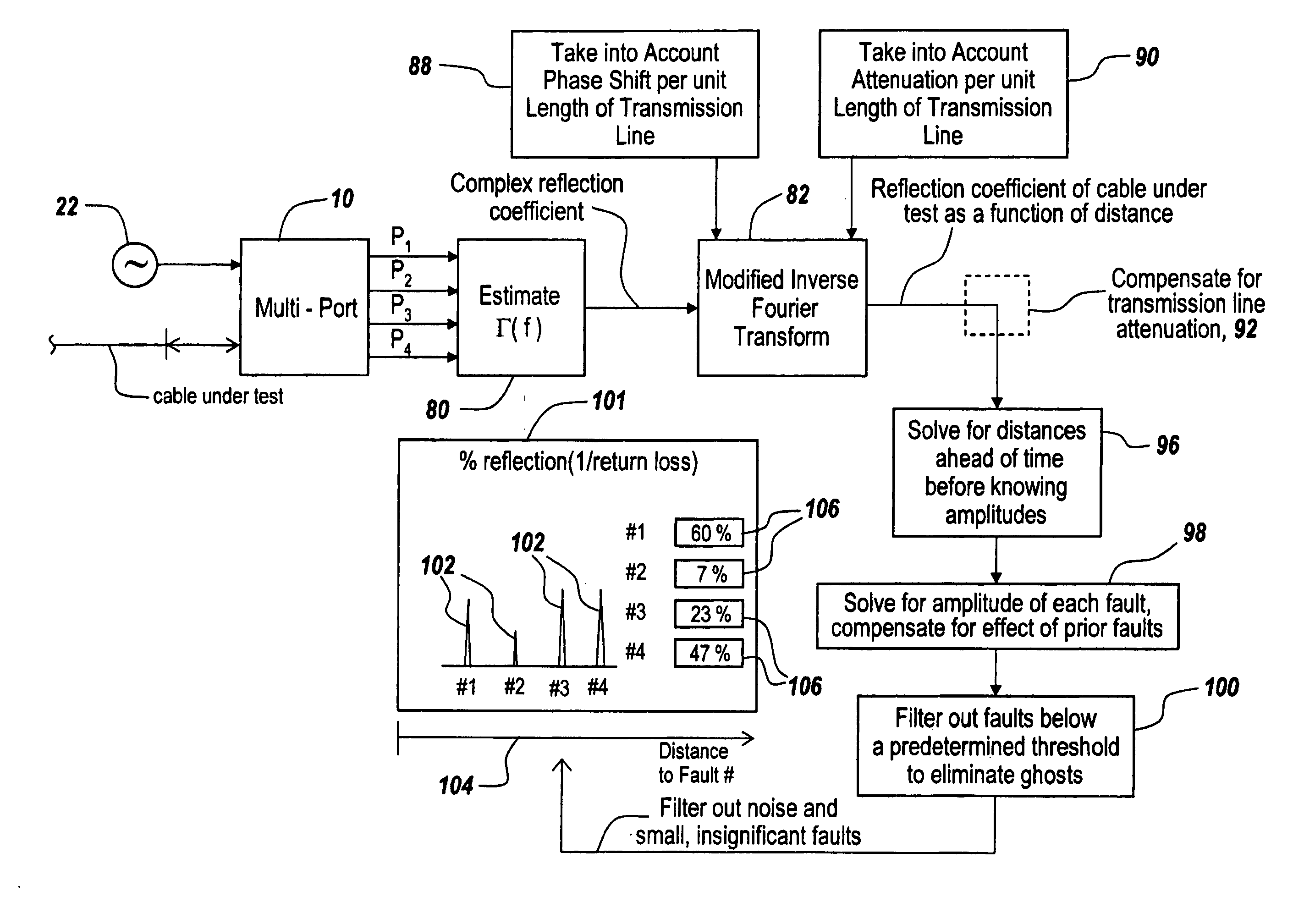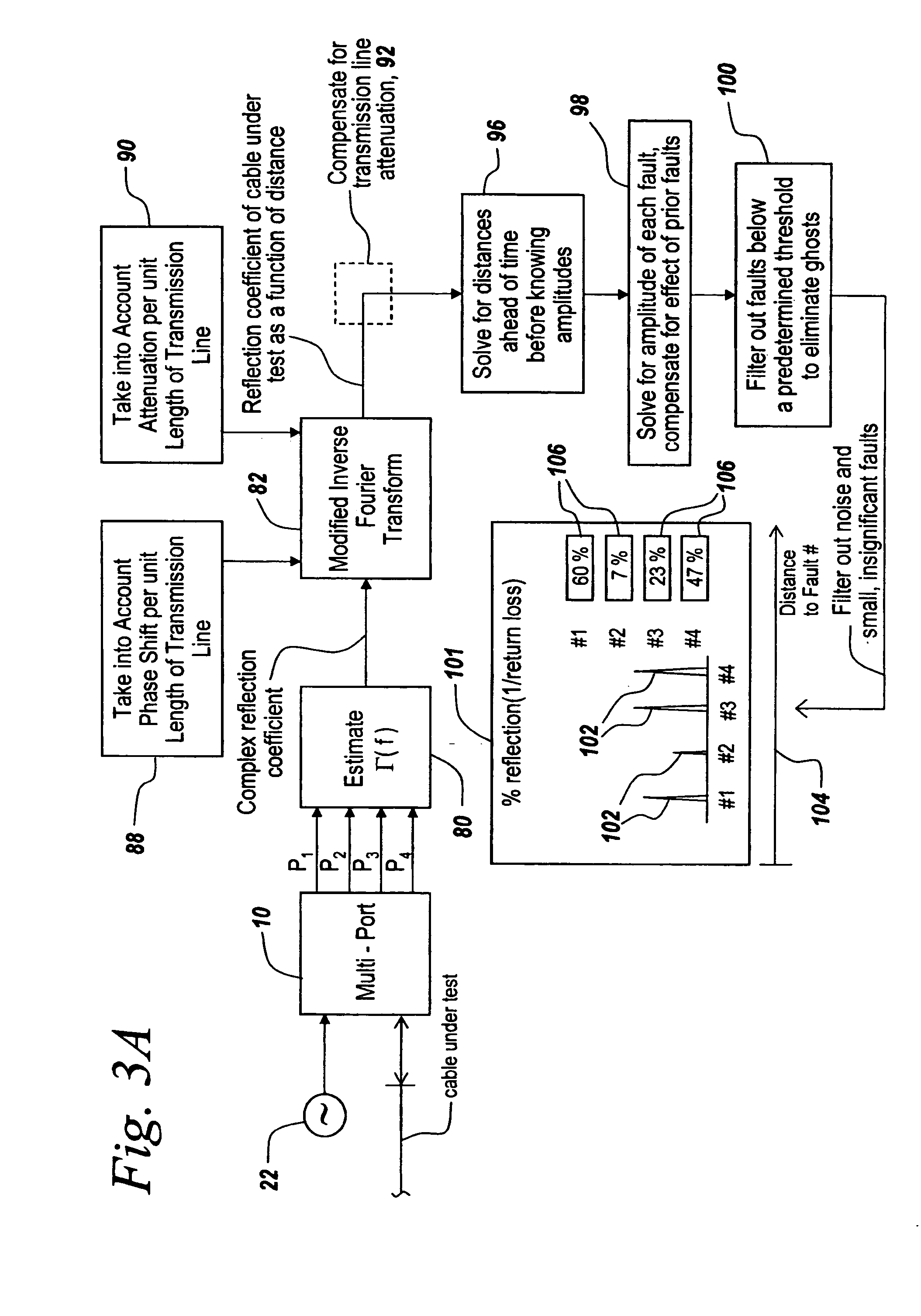Method and apparatus for calibrating a frequency domain reflectometer
a frequency domain and reflectometer technology, applied in the field of down conversionless systems, can solve the problems of material properties changing, faults at the interface between two cables, rf transmission lines and waveguides can become faulty, etc., and achieve the effect of accurate estimation of the complex reflection coefficient frequency profile and reduced computational complexity
- Summary
- Abstract
- Description
- Claims
- Application Information
AI Technical Summary
Benefits of technology
Problems solved by technology
Method used
Image
Examples
Embodiment Construction
[0063] Prior to describing the subject system in detail, a theoretical discussion of the subject system is presented.
[0064] It is a feature of the subject invention that since the output measurements from the six-port junction involves scaled versions of an RF source plus the returned signal from the cable under test, one can use these measurements to generate a complex reflection coefficient Γ(f) of the entire transmission line, be it a cable or waveguide. This complex reflection coefficient is then used to derive the scattering parameters of the individual faults themselves. Once one has derived the scattering parameters, the distance and severity of a fault can be ascertained.
[0065] As the frequency is stepped or swept, the complex reflection coefficient of the cable is modified by the fault. If it is a perfect cable, then the cable has an impedance that is matched to the measuring circuit. Therefore, all of the energy propagates through the cable to ground and nothing gets ref...
PUM
 Login to View More
Login to View More Abstract
Description
Claims
Application Information
 Login to View More
Login to View More - R&D
- Intellectual Property
- Life Sciences
- Materials
- Tech Scout
- Unparalleled Data Quality
- Higher Quality Content
- 60% Fewer Hallucinations
Browse by: Latest US Patents, China's latest patents, Technical Efficacy Thesaurus, Application Domain, Technology Topic, Popular Technical Reports.
© 2025 PatSnap. All rights reserved.Legal|Privacy policy|Modern Slavery Act Transparency Statement|Sitemap|About US| Contact US: help@patsnap.com



